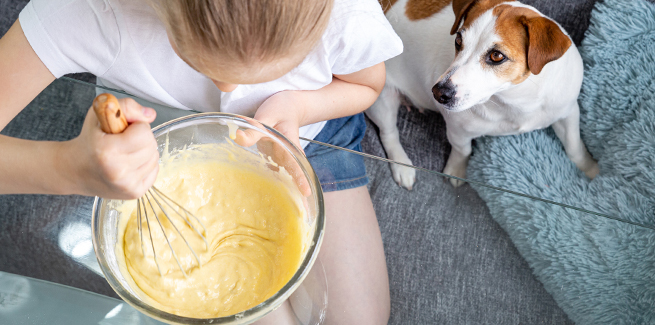Pandemic-related pet poisonings continue to rise—but the toxins are different

Last July, the Pet Poison Helpline reported that call volume was up about 43% compared to last year, and said COVID was to blame, in part.
“People are spending more time at home, they’re spending more time with their pets, they’re seeing their pets get into more things that they shouldn’t,” Ahna Brutlag, DVM, MS, DABT, DABVT, told NEWStat at the time. “And because they’re seeing that, they’re calling [to find out] if it’s going to be harmful to the pet.”
Brutlag is the Pet Poison Helpline’s director of veterinary services and senior veterinary toxicologist, and NEWStat checked back in with her this week to see whether things have changed.
She says call volume is still high—higher than it was in July and hovering at around 50% over last year, but the toxins are different. That’s because, as the pandemic’s worn on, the types of toxins pets are getting into has changed.
Last spring, most calls involved pets ingesting human medication.
This fall, food’s the number one problem. There were, of course, calls about food last spring as well. Last spring, the food-related calls involved, in descending order: chocolate, products containing xylitol, then grapes and raisins.
Since July, Brutlag says the biggest spike in calls involve . . . yeast, with calls up 390% over last year.
Yeast ingestion is followed closely by calls about bread dough (calls up 240% over last year).
That’s not as surprising as it might first appear, Brutlag says. As more people sheltered in place, many adopted new hobbies. Baking was especially popular, and calls about pets getting into yeast and bread dough shot up. And it’s very different from a dog grabbing a cookie off a counter.
“Most people don’t think about what bread dough does when it bakes,” Brutlag says.
It rises because of the yeast. And that can cause a double-whammy for pets: when the bread dough gets to the stomach, Brutlag says the dark, moist environment acts like an oven, so the dough continues to rise and the yeast ferments into alcohol. “So we end up with a pet who has alcohol poisoning as well as a bowel obstruction.”
Brutlag says it can be pretty obvious when a case like that presents at a hospital: “It smells like a brewery walked into the waiting room.” She said the alcohol poisoning catches many veterinarians off guard: “They’re surprised to learn that ethanol poisoning is a risk from this.”
In fact, Brutlag says that a lot of the calls concerning bread dough and yeast come from veterinarians because “it’s just not something that’s on their radar. Maybe they learned about it in vet school, but that could have been 10 or 20 years ago.” Many have never seen an actual case.
“Typically, our calls are reflective of what’s happening in people’s homes,” Brutlag says. Baking’s one example. So are do-it-yourself projects as homeowners finally have the time to do the minor home repairs they’ve been putting off for ages: she says the hotline’s seen a 118% increase in calls regarding paint and art supplies. “And a lot of dogs are getting into spackle.”
They’re seeing a lot of caffeine poisoning, too, with a 220% increase in calls involving brewed coffee. Brutlag suspects it has to do with so many people working from home: “They’re having their morning coffee at home instead of in the car on the way to work or at the office.”
And speaking of pets and alcohol poisoning, bread dough isn’t the only culprit—Brutlag says there’s been a spike in calls regarding pets getting into wine, beer, and mixed drinks, which she says could be a reflection of pet owners self-medicating for stress relief as the pandemic wears on.
Calls about coffee in the morning, and calls about cabernets in the evening: “We’re seeing exposure at both ends of the day, so to speak.”
Photo credit: © Natalia Duryagina/iStock/Getty Images Plus via Getty Images



